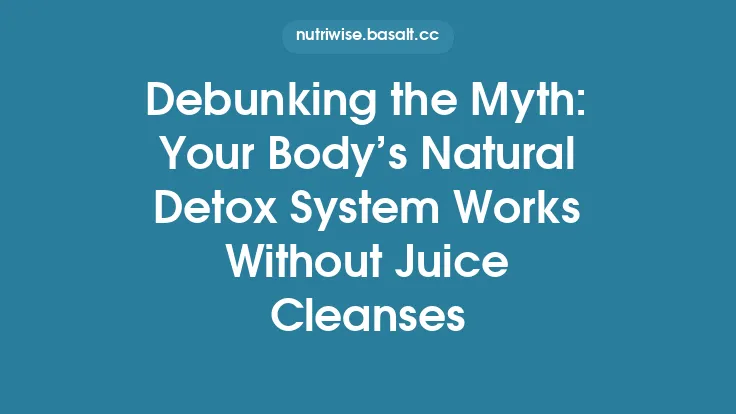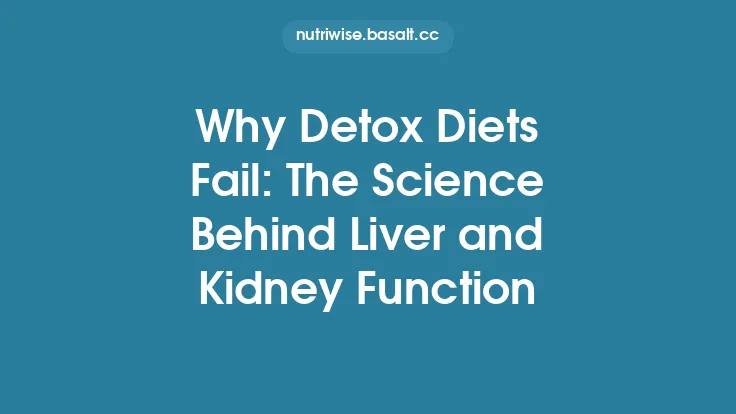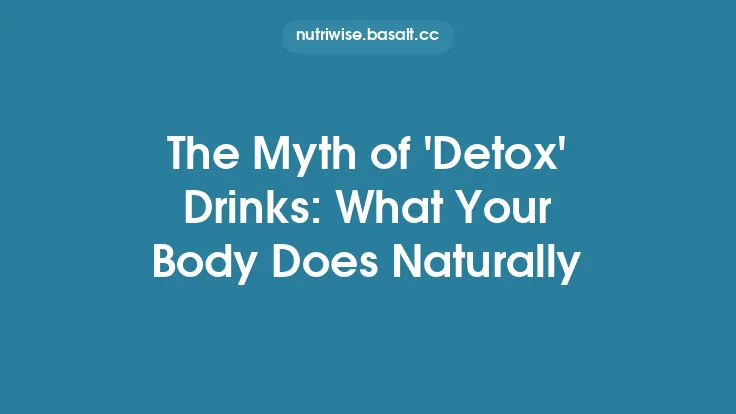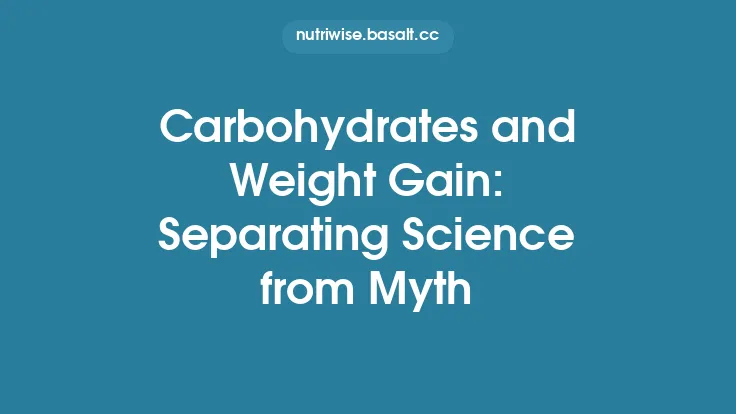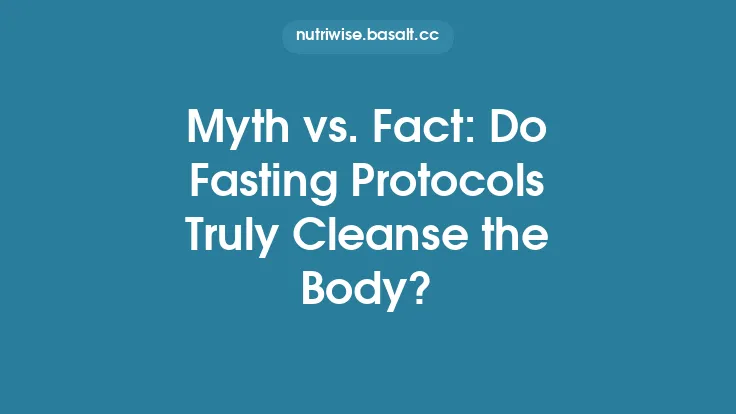The modern wellness marketplace is flooded with promises of “quick‑fix” detoxes that claim to flush out hidden poisons, melt away stubborn fat, and reboot your health in a single weekend. While the idea of a fast, dramatic cleanse is alluring, the reality is that your body already possesses a sophisticated network of organs, enzymes, and cellular processes that continuously identify, transform, and eliminate unwanted compounds. The key to truly supporting these pathways lies not in trendy “detox” products but in consistent, evidence‑based lifestyle choices that enhance the efficiency of the systems you were born with.
Understanding the Body’s Built‑In Detox Systems
Detoxification is not a single organ‑centric event; it is a coordinated series of biochemical reactions that occur primarily in the liver, but also involve the kidneys, lungs, skin, and gastrointestinal tract. These processes can be grouped into three broad phases:
| Phase | Primary Goal | Typical Reactions | Key Players |
|---|---|---|---|
| Phase I (Functionalisation) | Introduce a reactive group (e.g., –OH, –NH₂) to make a xenobiotic more water‑soluble | Oxidation, reduction, hydrolysis (often mediated by cytochrome P450 enzymes) | CYP450 isoforms, flavin‑containing monooxygenases |
| Phase II (Conjugation) | Attach endogenous molecules (glutathione, sulfate, glucuronic acid) to the functionalised compound, creating a highly water‑soluble product ready for excretion | Glutathione‑S‑transferase (GST), sulfotransferases, UDP‑glucuronosyltransferases (UGTs) | Glutathione, sulfate donors, UDP‑glucuronic acid |
| Phase III (Transport & Excretion) | Move the conjugated metabolites out of cells and into urine, bile, or sweat for elimination | ATP‑binding cassette (ABC) transporters, multidrug resistance proteins (MRPs) | Liver bile ducts, renal tubules, sweat glands |
When any of these steps are sub‑optimal—due to nutrient deficiency, chronic stress, or overwhelming exposure to pollutants—the body’s capacity to neutralise and clear toxins can be compromised. Supporting each phase through lifestyle and dietary means is therefore the most scientifically sound approach to “detoxification.”
Nutrition That Powers Detox Enzymes
While the article on fiber and antioxidants is off‑limits, the broader concept that specific nutrients act as cofactors for detox enzymes remains highly relevant. Below is a concise, evidence‑based list of nutrients that directly influence Phase I and Phase II reactions, along with practical food sources.
| Nutrient | Role in Detox | Food Sources |
|---|---|---|
| B‑vitamins (B2, B3, B6, B12, folate) | Provide methyl groups for Phase II methylation; support SAMe (S‑adenosyl‑methionine) synthesis, a universal methyl donor | Whole grains, legumes, leafy greens, eggs, dairy |
| Selenium | Integral component of glutathione peroxidase, protecting cells from oxidative stress that can impair detox enzymes | Brazil nuts, seafood, turkey, sunflower seeds |
| Zinc | Cofactor for metallothionein, a protein that binds heavy metals and facilitates their excretion | Oysters, beef, pumpkin seeds, chickpeas |
| Methionine (essential sulfur amino acid) | Precursor for cysteine, which in turn is required for glutathione synthesis | Fish, poultry, eggs, soy products |
| Vitamin C (as a reducing agent) | Regenerates oxidised glutathione and supports Phase II conjugation reactions | Citrus fruits, kiwi, bell peppers, broccoli |
| Vitamin E (tocopherols) | Works synergistically with vitamin C to protect membrane lipids, preserving transporter function | Nuts, seeds, avocado, wheat germ oil |
| Magnesium | Stabilises ATP, essential for the activity of many detox‑related enzymes | Dark leafy greens, nuts, seeds, whole‑grain products |
Practical tip: Rather than relying on isolated supplements, aim to incorporate a “rainbow” of whole foods daily. A simple plate that includes a lean protein (for methionine), a colorful vegetable medley (for B‑vitamins and antioxidants), a serving of nuts or seeds (for selenium and zinc), and a fruit dessert (for vitamin C) will collectively supply the cofactors needed for optimal detox enzyme function.
The Power of Sleep and Circadian Rhythm
Sleep is often dismissed as a luxury, yet it is a cornerstone of metabolic housekeeping. During deep, non‑rapid‑eye‑movement (NREM) sleep, the brain’s glymphatic system dramatically increases interstitial fluid flow, flushing out metabolic waste products such as β‑amyloid and tau proteins. Parallel processes occur in peripheral tissues:
- Liver regeneration: Hepatocytes undergo a nightly wave of autophagy, breaking down damaged proteins and organelles, thereby preserving enzymatic efficiency.
- Renal clearance: Nocturnal urine production is more concentrated, facilitating the excretion of water‑soluble metabolites.
- Hormonal balance: Growth hormone peaks during early sleep, stimulating tissue repair and supporting the synthesis of glutathione.
Disruption of the circadian clock—through shift work, irregular sleep schedules, or excessive blue‑light exposure—blunts these restorative cycles, leading to reduced expression of detox‑related genes (e.g., *CYP1A2, GSTP1*). Prioritising 7–9 hours of uninterrupted sleep, dimming lights an hour before bedtime, and maintaining a consistent sleep‑wake schedule are therefore non‑negotiable components of any detox‑support strategy.
Physical Activity: Mobilising Metabolic Waste
Exercise does more than burn calories; it actively stimulates several detox pathways:
- Enhanced circulation: Increased cardiac output delivers oxygen and nutrients to detox organs, while also accelerating the transport of metabolites to excretory sites.
- Sweat‑mediated excretion: Perspiration eliminates trace amounts of heavy metals (e.g., arsenic, cadmium) and lipid‑soluble compounds that may not be efficiently cleared by urine or bile.
- Mitochondrial biogenesis: Regular aerobic training up‑regulates peroxisome proliferator‑activated receptor gamma coactivator‑1α (PGC‑1α), a master regulator of mitochondrial health, which in turn improves the capacity for Phase I oxidation reactions.
- Lymphatic flow: Muscle contractions act as a pump for the lymphatic system, facilitating the removal of interstitial waste that would otherwise accumulate.
Evidence‑based recommendation: Aim for at least 150 minutes of moderate‑intensity aerobic activity (e.g., brisk walking, cycling) per week, complemented by two sessions of resistance training. Incorporating short, high‑intensity interval bouts (HIIT) 1–2 times weekly can further boost the expression of detox‑related enzymes via the Nrf2 signaling pathway.
Managing Stress to Preserve Detox Capacity
Chronic psychological stress triggers sustained activation of the hypothalamic‑pituitary‑adrenal (HPA) axis, elevating cortisol and catecholamine levels. This hormonal milieu has several downstream effects that impair detoxification:
- Glutathione depletion: Cortisol increases oxidative stress, consuming glutathione faster than it can be replenished.
- Reduced hepatic blood flow: Vasoconstriction diverts blood away from the liver, limiting substrate delivery for Phase I/II reactions.
- Altered gut permeability: Stress‑induced “leaky gut” allows endotoxins to enter circulation, overloading the liver’s clearance capacity.
Interventions that attenuate stress have been shown to restore detox enzyme activity. Mind‑body practices such as mindfulness meditation, yoga, and deep‑breathing exercises increase parasympathetic tone, lower cortisol, and up‑regulate Nrf2—a transcription factor that drives the expression of antioxidant and Phase II enzymes.
Quick stress‑reduction protocol:
- Box breathing (4‑4‑4‑4): Inhale for 4 seconds, hold 4 seconds, exhale 4 seconds, hold 4 seconds; repeat for 5 minutes.
- Progressive muscle relaxation: Systematically tense and release major muscle groups, fostering physical and mental relaxation.
- Nature exposure: Even a 15‑minute walk in a green space can lower cortisol by up to 20 % (meta‑analysis, 2022).
Reducing Environmental Exposures
While we cannot eliminate all environmental toxins, strategic choices can markedly lower the burden placed on our detox systems:
| Exposure | Practical Mitigation |
|---|---|
| Air pollutants (PM2.5, VOCs) | Use HEPA filters at home, avoid heavy traffic routes during rush hour, keep windows closed on high‑pollution days, and consider indoor plants with proven air‑purifying abilities (e.g., *Chlorophytum comosum*). |
| Heavy metals (lead, mercury) | Choose low‑mercury fish (e.g., sardines, salmon) over high‑mercury species (shark, swordfish); test home water for lead if using old plumbing; opt for stainless steel or glass cookware instead of non‑stick pans. |
| Pesticide residues | Prioritise organic produce for the “dirty dozen” (strawberries, spinach, apples, etc.) and wash all fruits/vegetables with a vinegar‑water solution (1 part vinegar to 3 parts water) before rinsing. |
| Endocrine‑disrupting chemicals (BPA, phthalates) | Use glass or stainless‑steel containers for food and beverages; avoid heating plastic in microwaves; select fragrance‑free personal care products. |
| Alcohol | Limit intake to ≤ 1 standard drink per day for women and ≤ 2 for men; excessive alcohol overwhelms hepatic Phase I enzymes and depletes glutathione. |
By systematically addressing these sources, you reduce the “input” that your detox pathways must process, allowing them to operate more efficiently.
Supporting the Gut Microbiome
The trillions of microbes residing in the gastrointestinal tract act as a secondary detox organ. Certain bacterial species possess enzymes capable of deconjugating bile acids, metabolising polyphenols, and even reducing heavy metals to less toxic forms. A balanced microbiome also fortifies the intestinal barrier, preventing translocation of endotoxins that would otherwise tax hepatic clearance.
Key strategies to nurture a detox‑friendly microbiome:
- Diverse plant intake: A variety of phytonutrients feeds a broader range of bacterial species. Aim for at least 30 different plant foods per week.
- Fermented foods: Sauerkraut, kimchi, kefir, and tempeh introduce live cultures that can augment native populations.
- Prebiotic fibers (in moderation): While the dedicated article on fiber is off‑limits, it is still valid to mention that soluble prebiotics such as inulin and resistant starch support short‑chain fatty acid (SCFA) production, which in turn enhances colonocyte health and promotes efficient waste removal.
- Avoid unnecessary antibiotics: When antibiotics are essential, follow up with probiotic supplementation and a gut‑reparative diet to restore microbial balance.
Practical Lifestyle Checklist
| Area | Action Item | Frequency |
|---|---|---|
| Nutrition | Include a source of methionine, B‑vitamins, selenium, and zinc at each main meal | Daily |
| Sleep | Maintain a consistent bedtime, limit screens 1 h before sleep, keep bedroom cool (≈ 18 °C) | Nightly |
| Exercise | 150 min moderate cardio + 2 strength sessions + 1 HIIT session | Weekly |
| Stress | Practice mindfulness or breathing exercises for ≥ 10 min | Daily |
| Environment | Use air purifier, choose low‑mercury fish, avoid plastic microwaving | Ongoing |
| Gut Health | Eat ≥ 5 servings of varied plant foods, add fermented food | Daily |
| Hydration | Drink water throughout the day (≈ 2 L for most adults) | Ongoing |
Implementing even a subset of these actions will create a synergistic effect, amplifying the body’s innate detox capacity without resorting to gimmicky cleanses.
Frequently Asked Questions
Q: Do I need a “detox” supplement to boost these pathways?
A: Most research indicates that whole‑food sources of nutrients outperform isolated supplements for supporting Phase I/II enzymes. Targeted supplementation may be warranted only in the presence of a documented deficiency (e.g., selenium in regions with low soil content).
Q: How long does it take to see improvements after changing lifestyle habits?
A: Enzyme expression can respond within days to weeks. For example, a 2‑week regimen of regular aerobic exercise has been shown to increase hepatic CYP450 activity by ~15 %. However, measurable health outcomes (e.g., reduced oxidative markers) often require 2–3 months of consistent practice.
Q: Can I “detox” by fasting?
A: While short‑term fasting can stimulate autophagy, the primary benefit is cellular recycling rather than enhanced excretion of external toxins. The focus should remain on supporting the liver, kidneys, and gut rather than relying on fasting alone.
Q: Is sweating an effective way to eliminate toxins?
A: Sweat does contain trace amounts of heavy metals and lipid‑soluble compounds, but the volume is modest compared to renal excretion. Saunas and exercise are valuable for cardiovascular health and stress reduction, but they should complement—not replace—other detox‑supportive habits.
Bottom Line
Your body is equipped with a highly efficient, self‑regulating detox network that operates continuously. The most reliable way to keep this system running at peak performance is to:
- Supply the necessary nutrients that act as cofactors for detox enzymes.
- Prioritise restorative sleep and respect the circadian rhythm.
- Engage in regular physical activity to boost circulation, lymphatic flow, and mitochondrial health.
- Manage chronic stress to protect glutathione stores and maintain hepatic blood flow.
- Minimise exposure to environmental pollutants, heavy metals, and endocrine disruptors.
- Cultivate a diverse, resilient gut microbiome that assists in biotransformation and barrier integrity.
When these pillars are consistently upheld, the body’s own detox pathways become more robust, allowing you to feel energetic, clear‑headed, and resilient—without the need for fleeting “detox” fads. By focusing on evergreen, science‑backed habits, you empower your physiology to do what it does best: keep you healthy, day after day.
